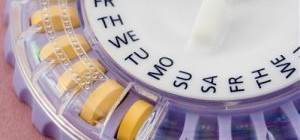First, let’s look at the numbers. About 6% women between the age 15 to 44 years are unable to get pregnant after one year of trying for pregnancy. In about 35% of couples with infertility, a male contributing factor is identified along with the problem in the woman in the United States.
With these percentages, you can get an estimate of the number of people having the problem of infertility.
Coming to the causes of infertility there can be a host of different identifiable causes-many of which cannot be resolved without infertility treatments.
In women, theycan beroughly classified as:
- Infertility due to fallopian tube problems
- Infertility due to ovarian disorders
- Infertility due to uterine disorders
- Infertility because of Endometriosis
In case of male infertility the causescan be:
- Sperm disorders-low count and low motility
- Testicle or prostate inflammations
- Lesions or torsion of the testicles-physical trauma
- A congenital or acquired obstruction of the tubules carrying sperms
- Rare tumors or lesions in the central neural system
- Temporary sperm disorders
Symptoms of infertility
There are no direct physical or mental symptoms of infertility that can be experienced by couples. It is revealed when the woman is unable to get pregnant after trying to conceive for a considerable amount time. It is diagnosed as infertility of clinical significance only after a woman has failed to conceive even after trying continuously for one year. Therefore, unable to get pregnant is the only sign of infertility. But, this does not indicate that only female factors can be the contributing factors. Further, both the partners are expected to undergo a thorough medical examination to rule out the possible contributing factors from both the partners.

Treatment for women:
Most women benefit from one or two therapies and they can have a healthy pregnancy. In some cases, different types of treatments may be needed to administer before they get pregnant.
- Stimulating ovulation with medication.If the cause of infertility is diagnosed to be ovulation disorder, medication treatment is the front line treatment. These medications regulate or induce ovulation by stimulating the process of ovulation. Since they are drugs they might have some risks along with the benefits. This can be best addressed if you discuss with your doctor.
- Intrauterine Insemination (IUI).This is a procedure in which healthy sperm is placed directly in the uterus precisely around the time when the ovaries release one or more, ready to fertilize eggs. The timing of IUI is coordinated with your normal menstrual cycle or with fertility medications to get assured results.
- Surgery to restore fertility.If the causes of infertility are uterine problems such as endometrial polyps, a uterine septum or intrauterine scar tissue, they can be treated with a surgery called as hysteroscopy.
- Assisted reproductive technology.Assisted reproductive technology (ART) is an umbrella term for any fertility treatment in which the eggs and sperms are handled and assisted to interact with each other. An ART health team includes physicians, psychologists, embryologists, lab technicians, nurses and allied health professionals who work together to make the pregnancy happen.
In vitro fertilization (IVF) is the most commonly used technique that comes under ART. In IVF, multiple mature eggs are extracted from the ovaries by stimulating the egg production. They are fertilized with man’s sperm in a dish in a lab, and embryos are implanted in the uterus three to five days after fertilization.
Other techniques are sometimes used in IVF cycle if there is a need for additional methods to achieve fertilization
- Intracytoplasmic sperm injection (ICSI).A single healthy sperm is injected directly into a mature egg. ICSI is often used when low sperm quantity is the factor for infertility.
- Donor eggs or sperm.If there is a problem with the quality of woman’s eggs and sperms of both the partners, either eggs or sperms are taken from a donor and pregnancy is achieved.
- Gestational carrier.In case of women who don’t have a functional uterus or have defects of the uterus or for whom pregnancy can cause a serious health risk, they might choose IVF using a gestational pregnancy carrier. In this case, the couple’s embryo is implanted in the uterus of the carrier woman.
Treatment for men
- Medications are often prescribed for men for the problem like Low sperm count and low quality. They can improve sperm count and likelihood for achieving a successful pregnancy.
- In some conditions surgery is the solution if there is blockage in the tubes which carry sperm. It is often used to restore fertility. In some cases, surgically repairing a varicocele may improve overall chances for pregnancy.
- Sperm retrieval.These techniques are used to obtain sperm because of ejaculation problems or when no sperms are present in the semen. They may also be used in cases where assisted reproductive techniques are planned and sperm counts are low or otherwise abnormal.
- Changing lifestyle.Improving lifestyle and behavioral factors can improve chances for pregnancy. They can be discontinuing some medications, quitting smoking and other addictions, improving frequency and timing of intercourse, establishing regular exercise schedule, and optimizing other factors that may otherwise impair fertility.
Whatever the causes of infertility of might be, getting medical help at the right time is very important to get promising results. All credit goes to modern technology.
References:
http://www.progenesisivf.com/blog/5-signs-male-infertility-must-not-ignore/







